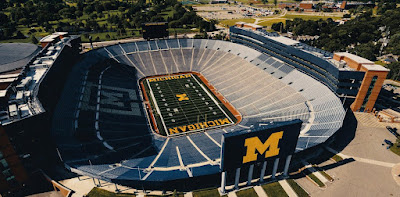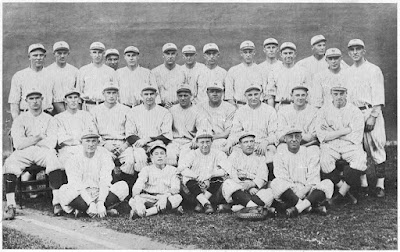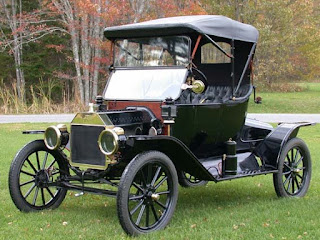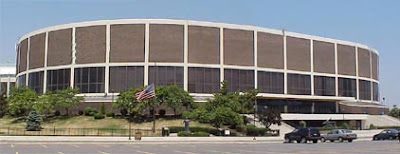October 1, 1927: Michigan Stadium Opens

October 1, 1927: Michigan Stadium opens in Ann Arbor, 38 miles west of downtown Detroit. The University of Michigan defeats Ohio Wesleyan (not Ohio State), 33-0. At the time, it seated 72,000. By 1956, it would top 100,000. Today, officially, capacity is 107,601. The Michigan Wolverines had previously played at the Washtenaw County Fairgrounds from 1883 to 1892; Regents Field from 1893 to 1906, winning the National Championship in 1901, 1902, 1903 and 1904; and Ferry Field from 1907 to 1926, winning the National Championship in 1918 and 1923. Fielding Yost, Michigan's head coach from 1901 to 1926, and its athletic director from 1921 to 1940, had it set Michigan Stadium up so that the foundations could handle an expansion well beyond 72,000. He imagined as much as 150,000, since Soldier Field in Chicago could supposedly hold that many. A later Michigan coach, Herbert "Fritz" Crisler, resumed the Wolverines' winning tradition that Yost began. In 1969, athletic directo






